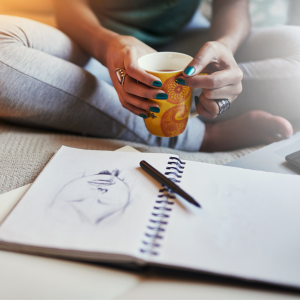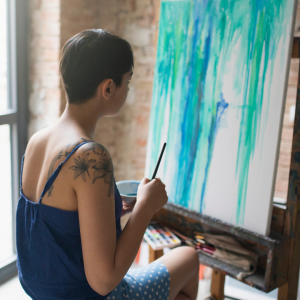How to Use Art to Cope and Heal from Trauma
 When words fall short, there are many therapeutic benefits to creating art – no matter what form. Researchers have documented art’s power and potential to help people heal from traumatic circumstances.
When words fall short, there are many therapeutic benefits to creating art – no matter what form. Researchers have documented art’s power and potential to help people heal from traumatic circumstances.
“When faced with trauma, it can often be difficult to express what we’re feeling with words,” said Tisha Bayless, manager of Memorial Behavioral Health. “When the right words can’t be found, art can be an effective form of expressing an emotion or a feeling. It allows many to transcend emotional pain, create a narrative through images of their trauma or loss, and, subsequently, master or overcome the trauma.”
As a counselor, Bayless frequently uses art with patients to help them cope with grief, loss, depression, anxiety and trauma. She has incorporated art therapy in treatment of those who have survived domestic violence, abuse and violent crime.
“In the process of creating art, we can relax, build and refine skills, distract, gain self-awareness and even heal,” said Bayless, who has also used art – specifically watercolor – to find peace and shift her perspective in the last two pandemic years.
“Watercolor has been my saving grace,” she said. “Through art, I’ve learned to find beauty in imperfection and patience with myself. My art also gives me something to focus on, something that I can control amidst of sea of things I cannot control – namely, a pandemic.”
Anyone can use art to promote healing and peace within themselves. Here are some ideas to get started:
 Make a stress painting. Choose colors, images, shapes and values that represent how your stress feels. Focus on how you feel in the moment and on what you are creating. Use whatever materials you have on hand – printer paper, pen and pencil, paints, or even crayons, will all work. Children enjoy this exercise as well.
Make a stress painting. Choose colors, images, shapes and values that represent how your stress feels. Focus on how you feel in the moment and on what you are creating. Use whatever materials you have on hand – printer paper, pen and pencil, paints, or even crayons, will all work. Children enjoy this exercise as well.- Create art while listening to music. Let your creativity flow in response to music. If you had to draw the music you’re listening to, what would it look like? This is a great exercise to engage in when you want to distract yourself from stress around you and focus on the here and now, what you hear, see and feel in this moment.
- Take photographs of things that are beautiful to you. Create photographic reminders for yourself of the people, objects and scenery that make up your everyday – beautiful – life. You can also try sketching or painting these scenes. Imagine in detail the person, object or place as you recreate it on paper or canvas. This exercise is therapeutic for depression or anxiety because it can derail negative thinking by shifting a person’s focus to something positive and good in life.